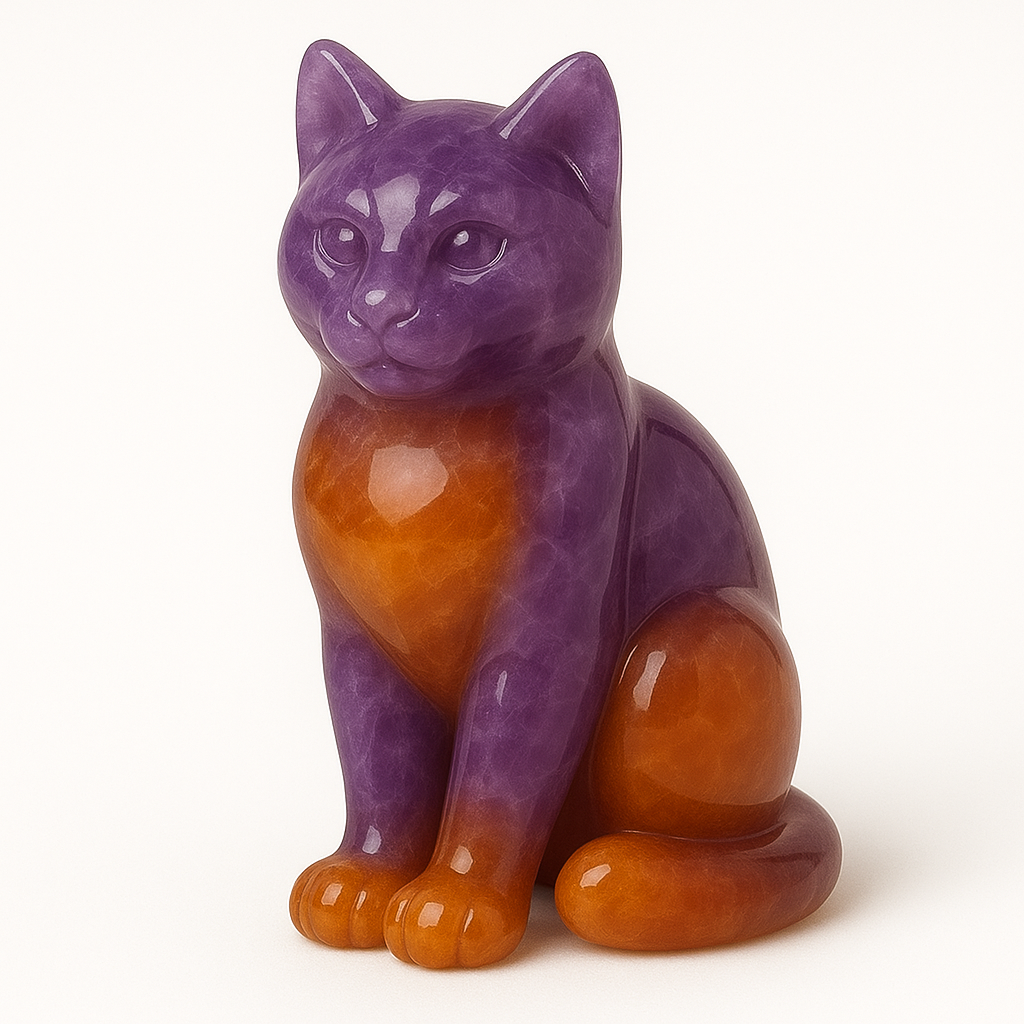
The Symbolism of Cats
Share
In the quiet corner of a sunlit room, on rooftops under moonlight, or in the depths of ancient temples, the cat moves—not hurried, not hesitant, but with an energy both veiled and precise. It is a creature wrapped in silence, cloaked in mystery, yet brimming with a deep and ancient intelligence. The cat does not shout its truth; it whispers. And in that whisper lies a symbolic resonance both subtle and profound.
To contemplate the cat is to enter a field of sovereignty, sensory refinement, and liminal awareness—a being that navigates both seen and unseen with seamless grace.
From Sacred Temples to Household Thrones
Across many cultures, the cat has been revered as more than a mere animal—it has stood as a guardian of thresholds, a companion to mystics, and at times, a vessel of the divine.
In ancient Egypt, cats were honored as sacred beings. Associated with the goddess Bastet, they were protectors of the home, guardians of fertility, and symbols of both nurturing and vengeance. Their presence was not ornamental—it was seen as essential to spiritual and physical well-being. To harm a cat was to offend the divine.
In Norse mythology, the chariot of the goddess Freyja was drawn by great cats, aligning them with magic, sensuality, and feminine power. In other traditions, cats were seen as familiars—helpers to those who practiced the magical arts, intuitively sensitive to unseen forces.
Even in superstition—where cats were feared or misunderstood—their mystique remained intact. They were not dismissed, but rather imbued with an aura of otherworldliness, of knowing what others could not.
Behavior as a Mirror of Consciousness
The cat’s behavior offers a unique energetic template. Unlike pack animals, the cat lives on its own terms. It chooses affection when it wishes, withdraws without explanation, and returns in silence. Its movements are fluid, calculated, and often appear without sound or warning. In this way, the cat is the emblem of self-contained awareness.
It rests deeply, but in alertness. It can leap from stillness into action with no visible transition. It cleanses itself not from vanity, but from instinctive ritual—maintaining purity of form and presence. It receives touch with discernment, not obligation. The cat gives and withdraws energy like a skilled practitioner of subtle currents.
To live with a cat is to engage in a relationship of mutual respect. It cannot be controlled, only invited. Its energy teaches that presence is more powerful than noise, and that attention need not be constant to be profound.
Resonance with the Energy Centers
The cat’s symbolic and behavioral pattern reflects a primary alignment with the indigo-ray energy center—the third eye chakra, seat of intuition, subtle perception, and spiritual awareness. The cat sees beyond what is visible. It is attuned to frequencies unnoticed by many in third-density form. It walks between worlds—physical and astral—with natural ease.
Its apparent detachment is not absence but deep presence, inwardly turned. This indigo-ray expression appears in the cat’s alert stillness, its gaze, and its uncanny sense of timing. It acts not reactively, but with intention—guided by unseen impressions.
A secondary resonance may be found with the orange-ray energy center, the sacral chakra, which governs sensuality, personal space, and emotional boundaries. The cat’s grace, physical sensitivity, and control over its energetic exchanges reflect a healthy and selective expression of this center. It does not scatter its energy, but conserves and expresses it with precision—choosing touch, choosing solitude, choosing movement—all in alignment with the self.
These two rays—orange and indigo—form an arc between personal refinement and spiritual receptivity. The cat moves within this arc, weaving between body and spirit, instinct and insight.
The Silent Seer
The cat is not a guide in the loud sense. It does not pull, it does not push. It appears when called in the right tone—and vanishes when misunderstood. Its medicine is quietude. Its teaching is discernment. It brings the lesson that intuition must be honored, that solitude is not lack, and that observation is a sacred act.
Those who sit with the cat learn the art of being still while aware, of loving without clutching, of moving without disrupting. The cat is both shadow and light—playful and distant, affectionate and unknowable. It teaches not by command, but by presence.
In every purr is a vibration of healing. In every gaze, a mirror. In every quiet step, a reminder that not all guidance is loud.
The cat is the mystic in fur.